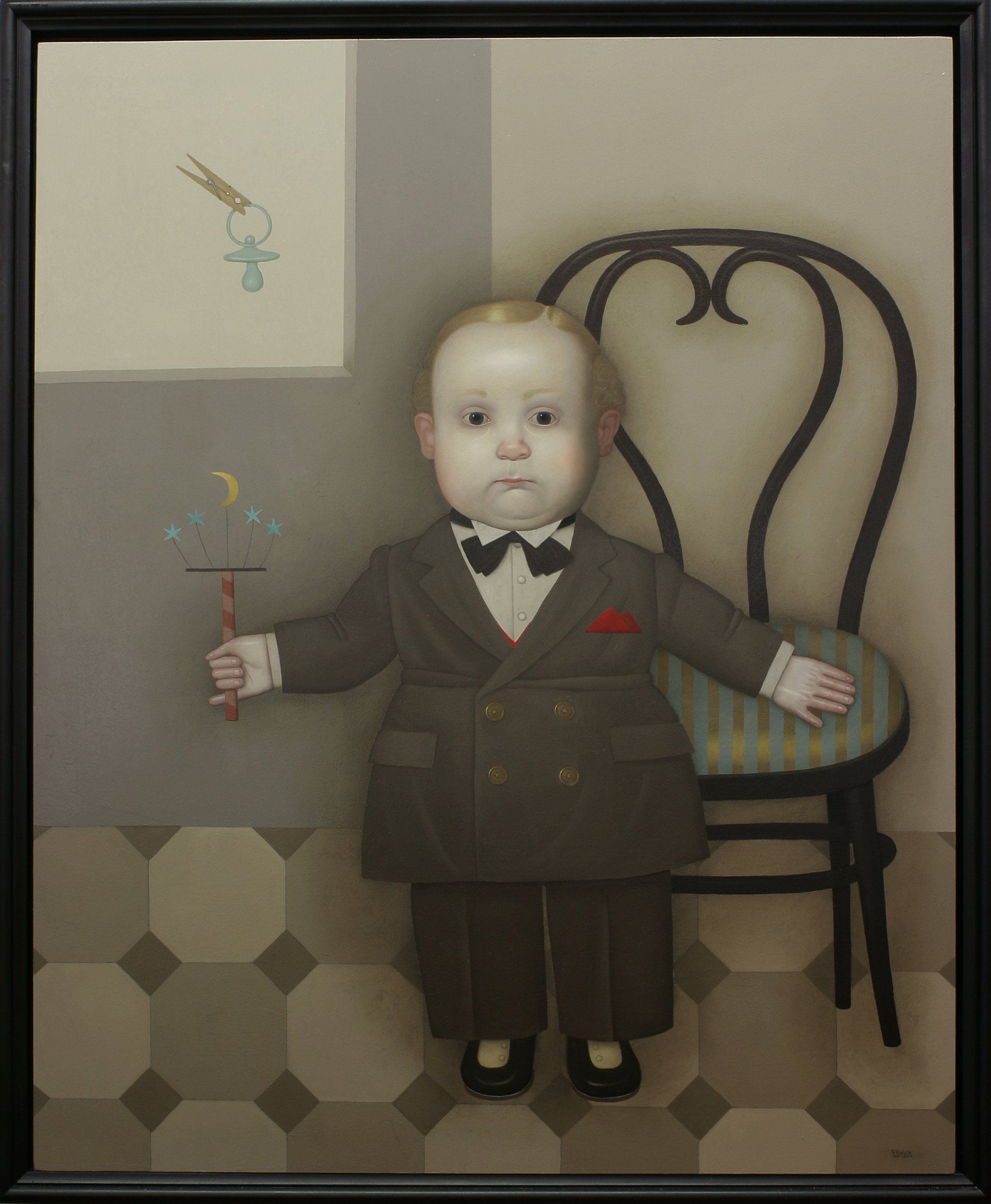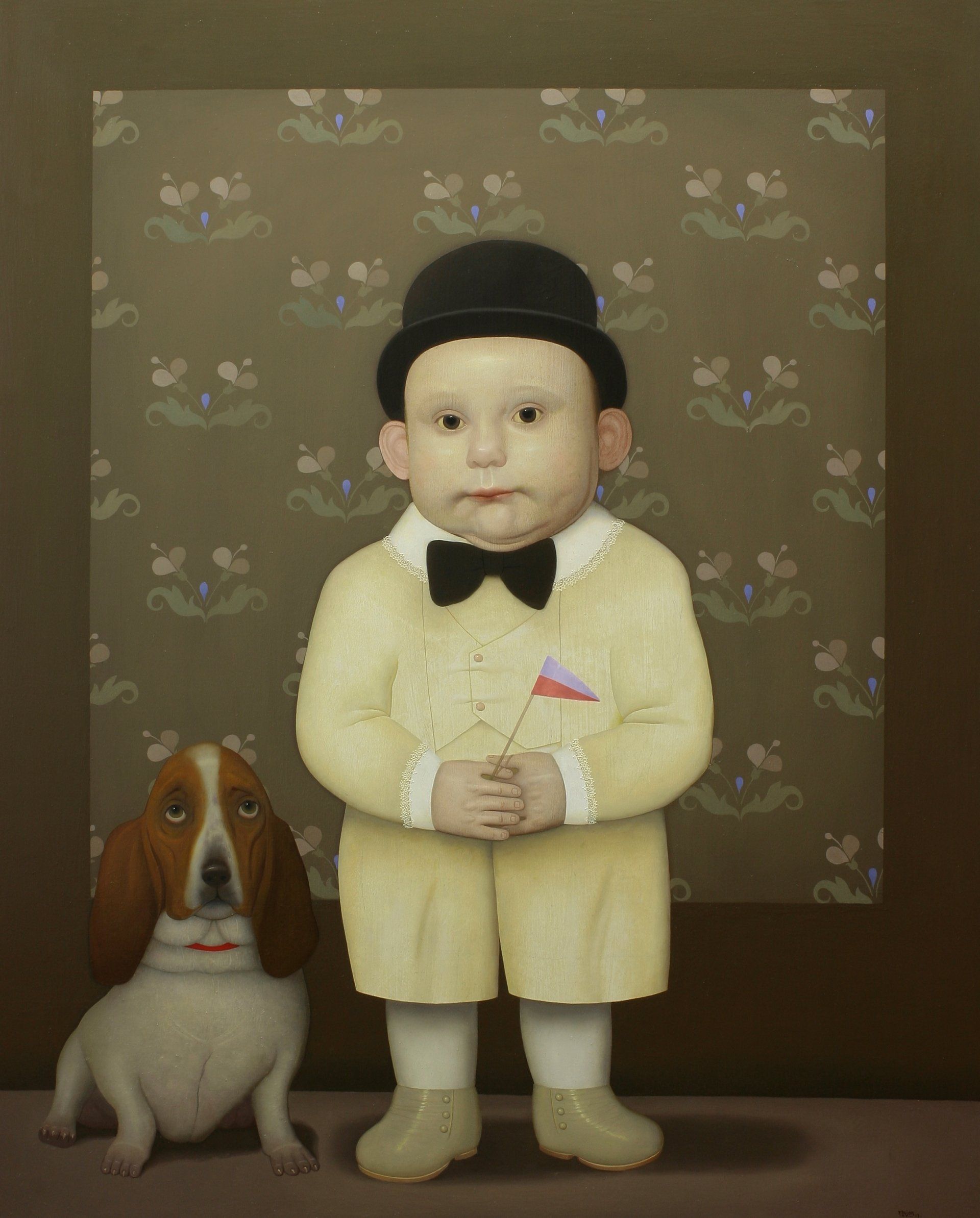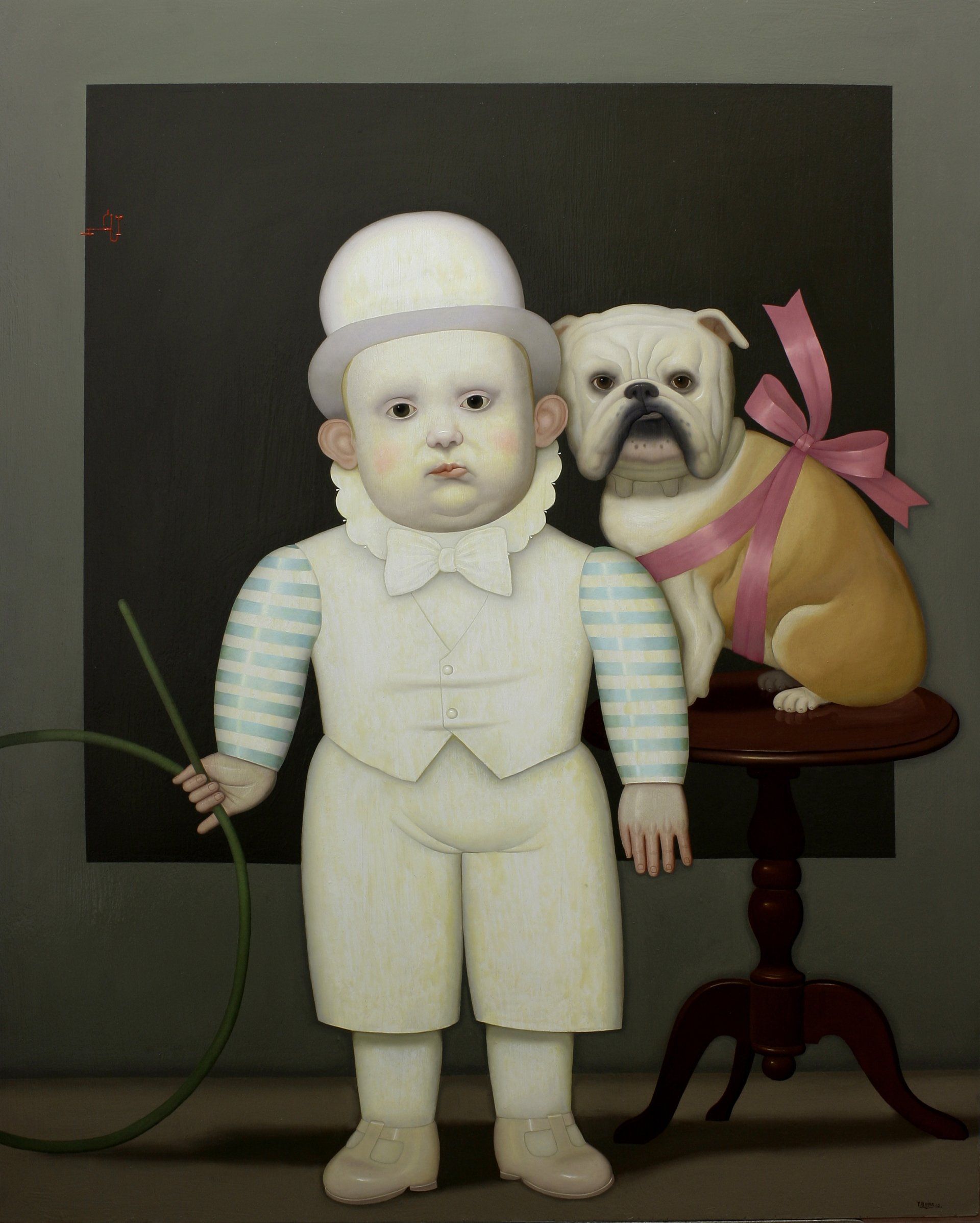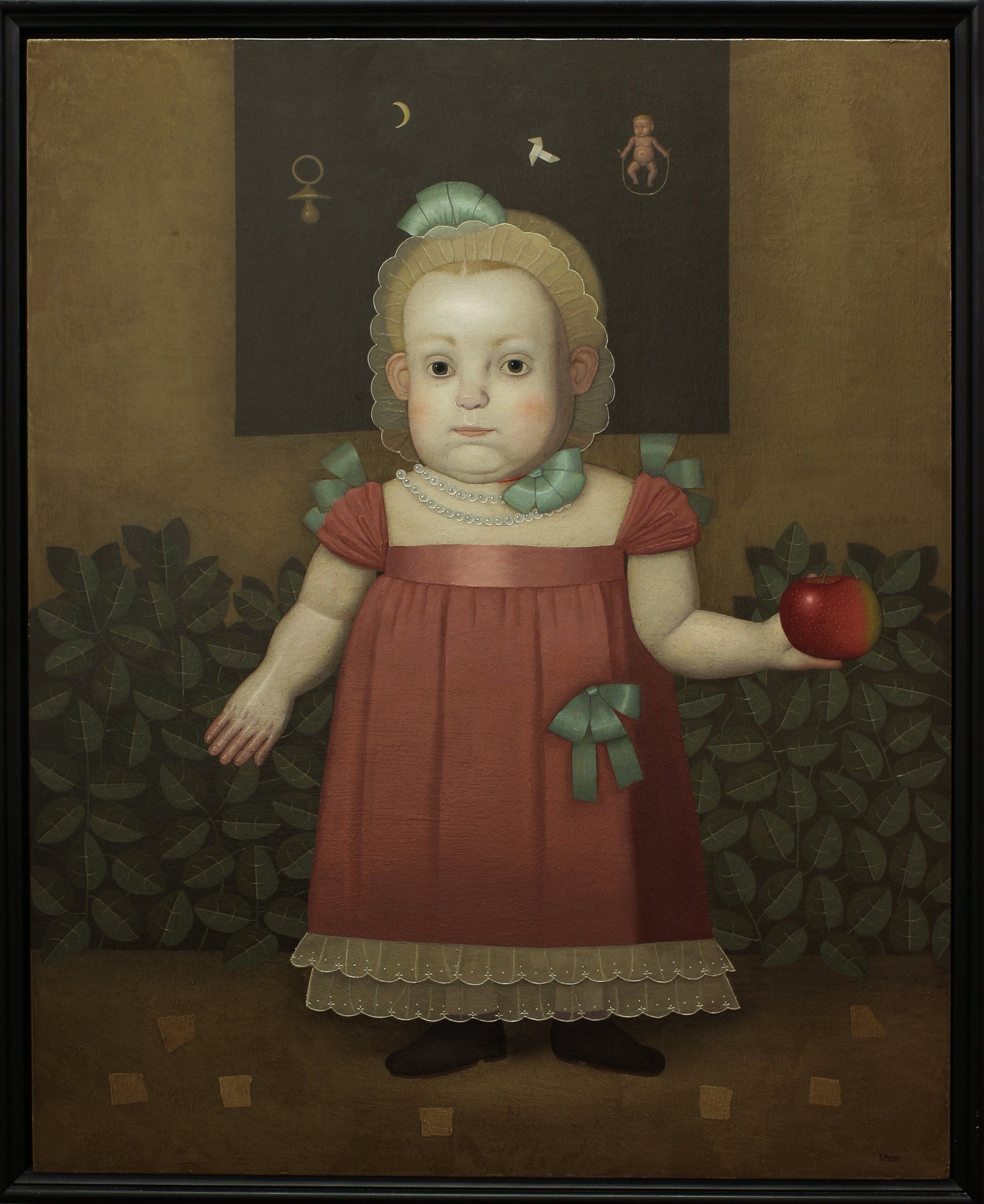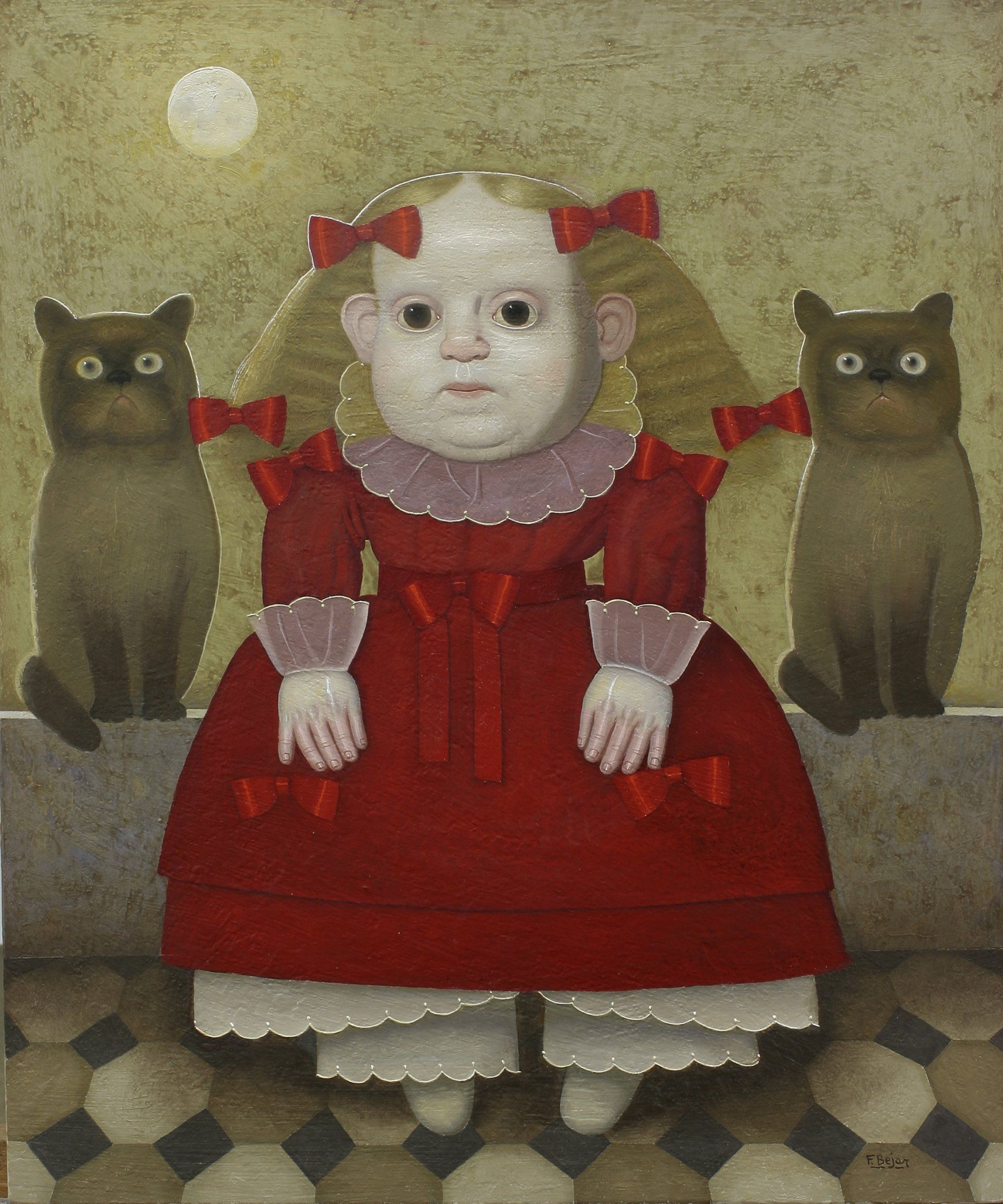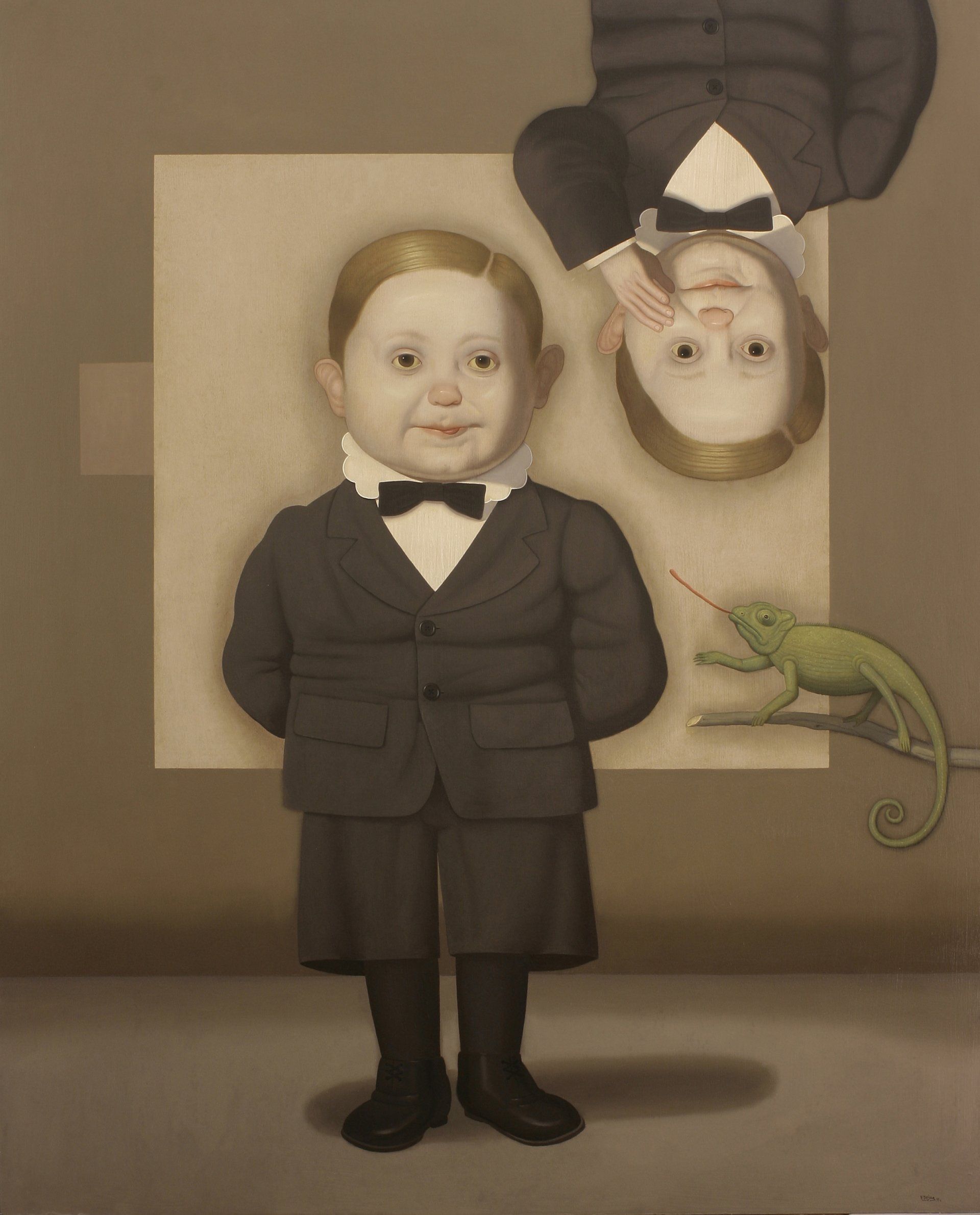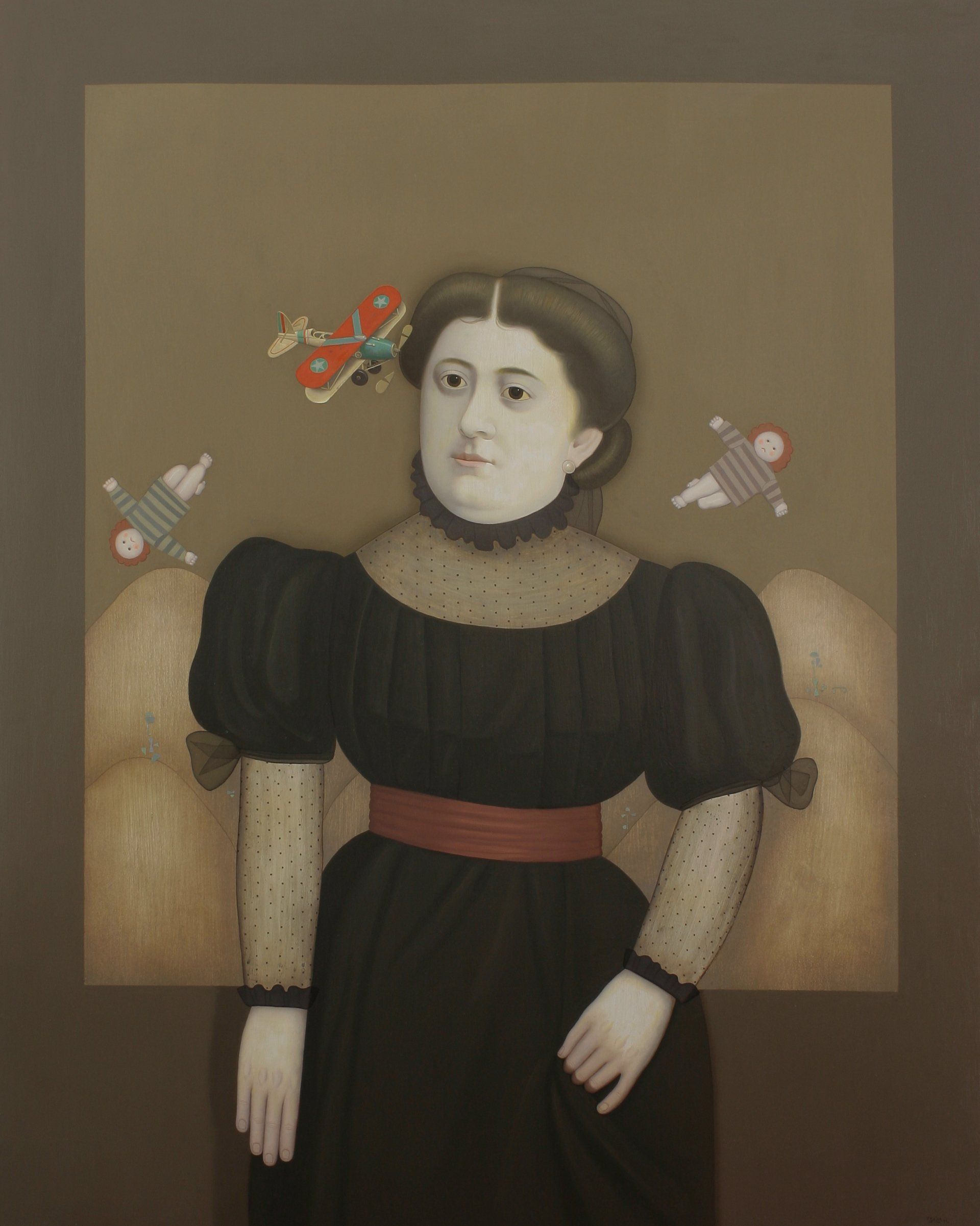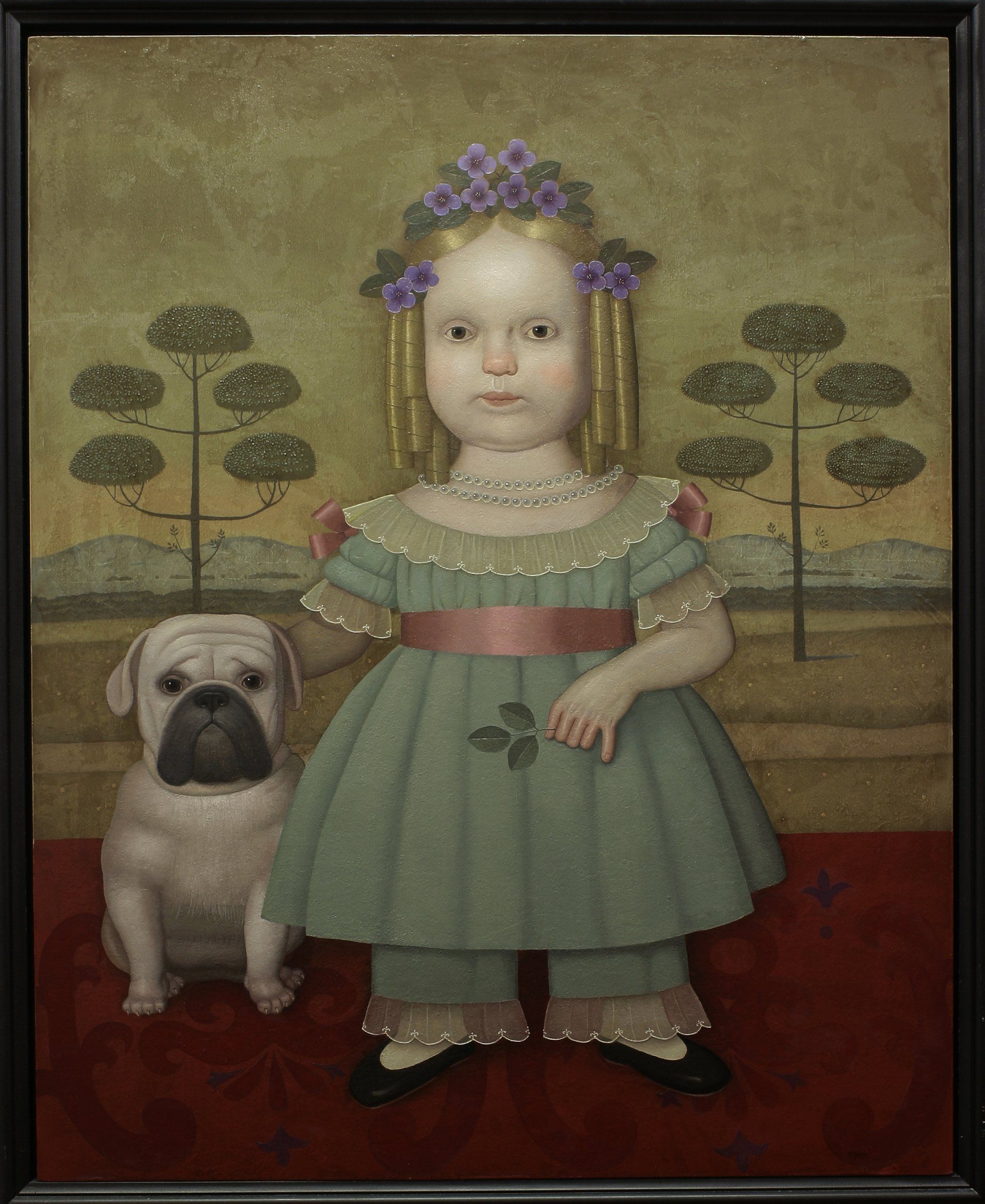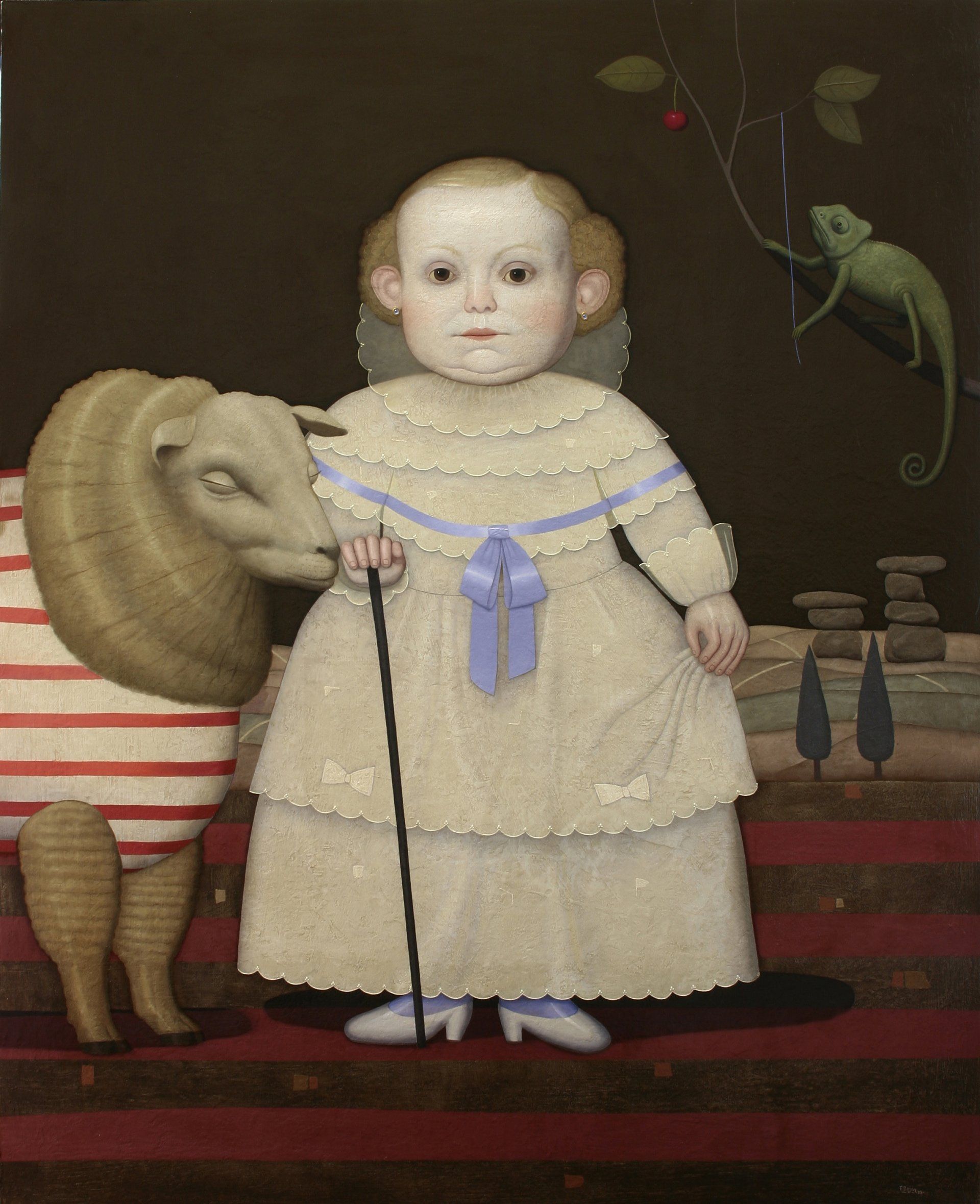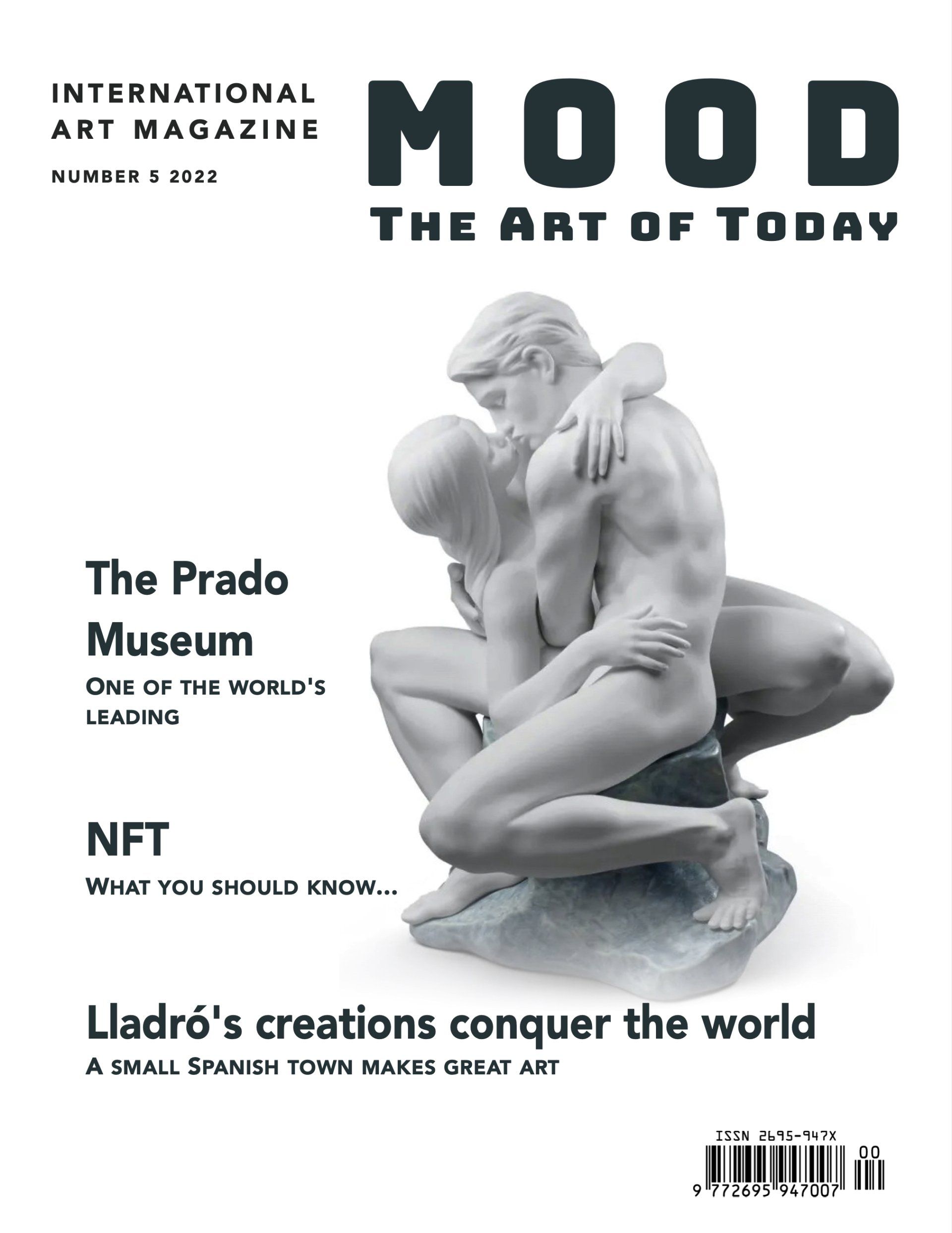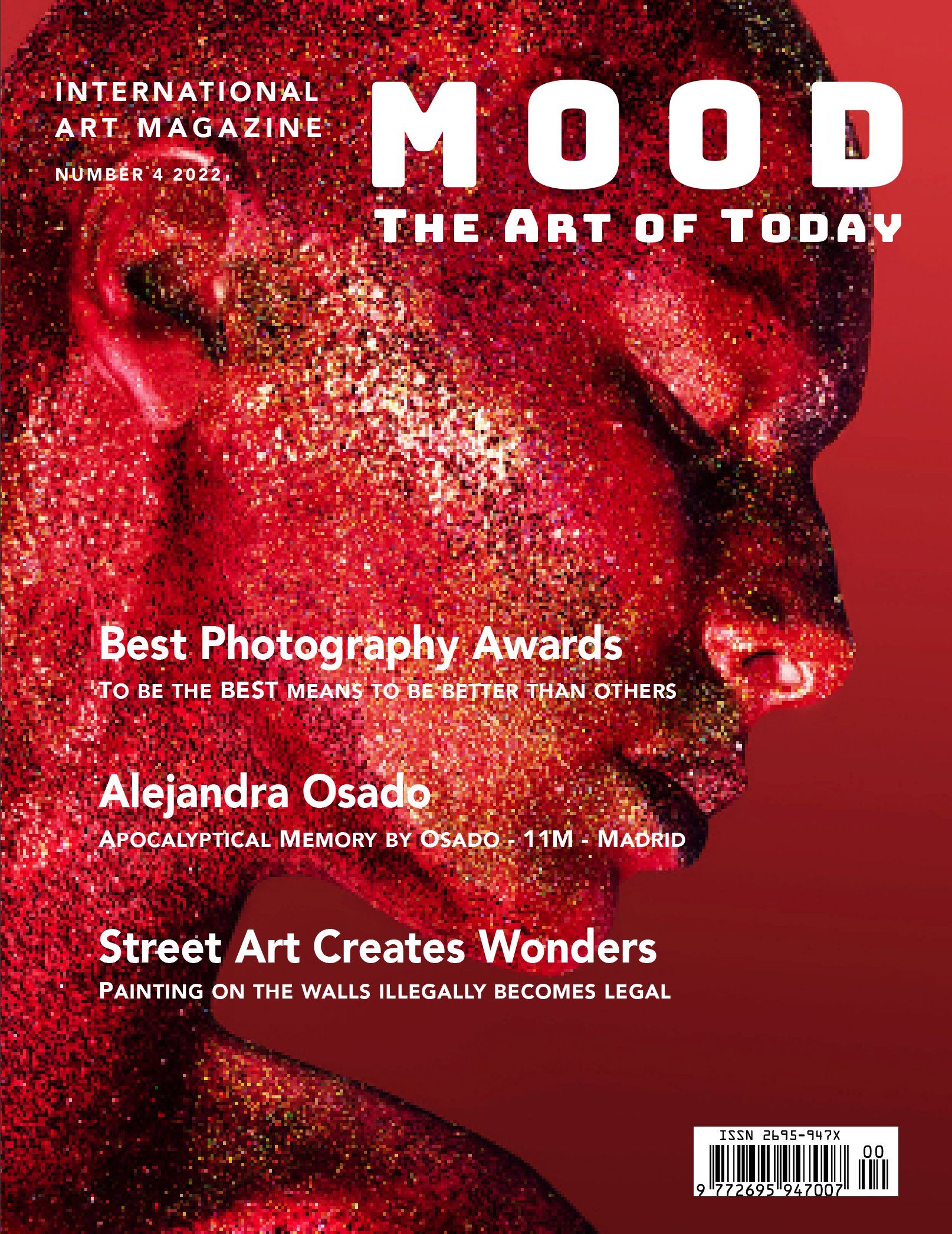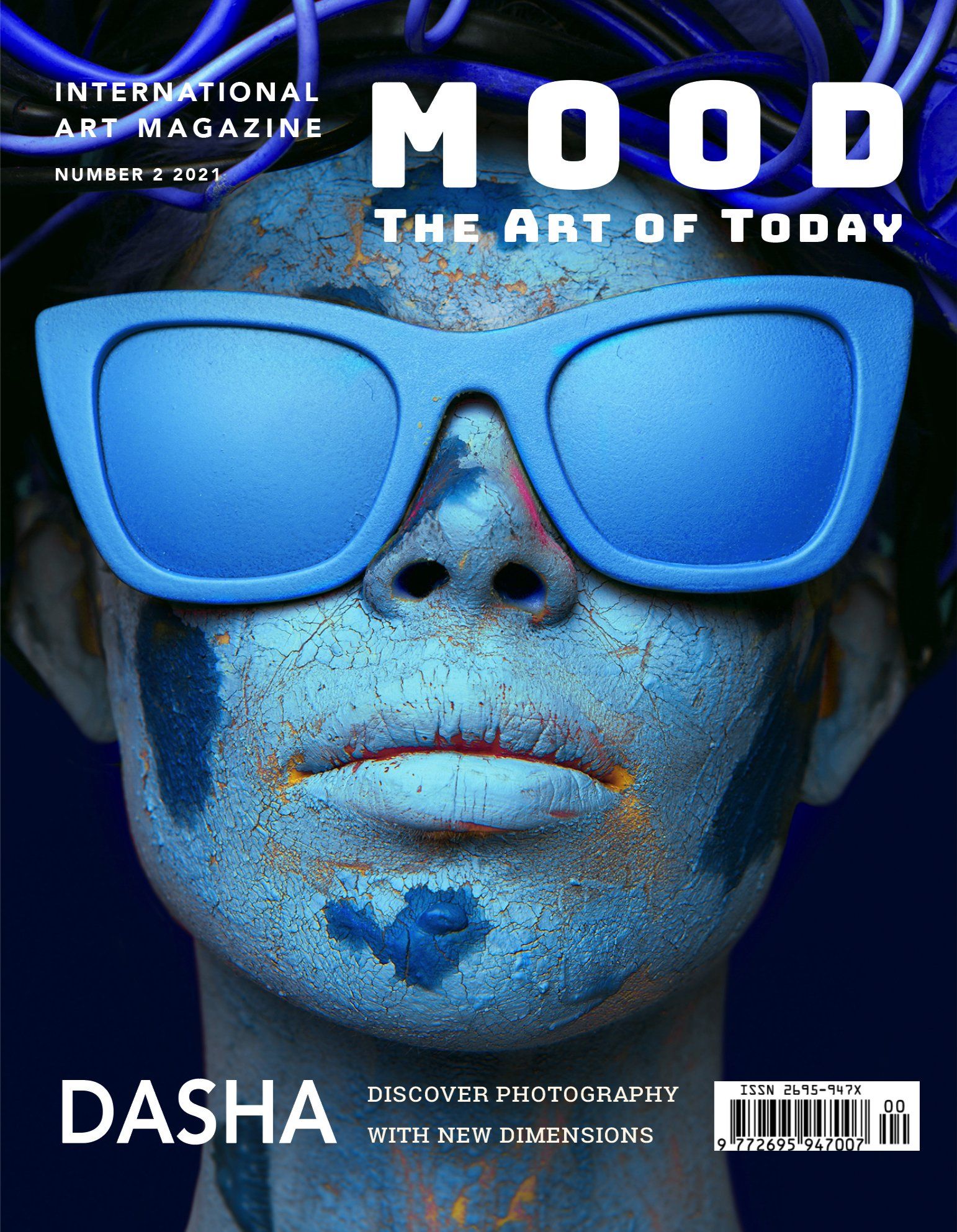JUAN BÉJAR
The "Poisoned Chocolates"
Meeting with Juan Béjar
By Adriana Ruh
To enter the world of painting of Juan Béjar (Málaga, 1946) is to enter a timeless space, full of symbols that combine past, present and future within the same canvas.
Each of his works are made with a detailed technique that speaks a lot about his permanent search for perfection. With great discipline, Béjar paints every day for many hours to achieve the perfect work, a work that, in his words, ‘is still to be done’. He declares himself as a nonconformist painter, very self-critical. ‘When I start to paint a painting, I think it will be the best I have done in my life, but it is not true because when I finish, I see that it is not, that I am missing, that the next one will be better. This is not an exercise that I impose on myself, but it comes only from self-criticism, but it is good for me because I evolve a lot in each painting’, tells Béjar.
As a self-taught artist he found his greatest teachers in museums. Since he was a child, he had a knack for drawing. Already in his youth, he began to master the techniques of oil painting and set out to make a living by making portraits, to pay for his trips to Madrid and to enter the Prado Museum. His great school were museums and there he dedicated himself to learning by observing great masters such as Velázquez, Rembrandt, painters from whom he adopts the technique of 19th century Spanish painting, adapting it to our time. Throughout his artistic career, Béjar has managed to capture his unique style and his own personality in each of his paintings, a style that art critics often call ‘Bejarian’.
From an early age, he had the desire to make changes in the cultural environment of his native Malaga. This is how his active relationship in the cultural institutions of the city brought him closer to the Royal Academy of Fine Arts of San Telmo, to which he was proposed to enter. Just one year later, Béjar resigned due to the lack of enthusiasm with which his proposals were received and the difficulty of creating working groups.
After that experience, he took part as a founding member of the Palmo Collective, considered one of the most important groups in the cultural history of Malaga. This group was made up of artists with a modern and avant-garde vision of art, opposed to the cultural tastes of Malaga in the eighties. They met in a modest place in the city centre where they managed to present great international figures, both in art and literature, poetry, music and criticism, programming interesting exhibitions and conferences, which contributed to updating the artistic and cultural tastes of the city.
Juan Béjar is a self-critical artist, very disciplined and with a very refined technique. In his evolution as a painter, we discovered that Kafka's literature and Freud's study of the interpretation of dreams marked a surrealist era in his painting. Part of that surrealist stage, we can still find it in the enigmatic environments of his paintings, in those roads that go nowhere and in the objects that seem not to belong to the scene, but are loaded with symbols, giving the whole environment inside a sense and a connection with the personage.
Conceptual symbolism
Juan Béjar's painting is made in the present, portraying a past that can be discovered in the slightly malicious smile and sour moments of his personage, those beings who seem to look to the future and make us reflect. For the artist, this amalgamation of times arises from his interest in not missing the train of the future, while extracting all the magic that exists in the past, to turn it into a different and current concept. In his words ‘The present is always surprising. Nothing in my paintings is the product of chance: I mix the transcendence of an outdated past with a perverse naivety; hence his painting is timeless and universal.
For him, symbology has great value in his work, leaving the purely figurative plane, to turn it into a feeling; To achieve this, he plays with symbols and elements with a double meaning. Béjar does not like to qualify his style within the figurative plane, but he prefers to frame his work within conceptual symbolism. Each of his paintings are loaded with symbols, elements that always have something to say, and in his work, everything has its meaning: the landscape or the interior scene is related to the personage and how he is dressed. Likewise, the small flying objects that he has been incorporating in his artistic evolution have a meaning even when they sometimes have no direct connection with the personage.
‘I want to create in my paintings an atmosphere of symbolism that creates reflection, liberation, enigma and strangeness. I want my paintings to ask questions that are not easy to answer: another way of looking at the world that is spiritual, that is the concept of trivial things, to which we do not give importance, which take centre stage. Everything is conceptual symbolism, because there is an abstract feeling that the person who observes it cannot explain.’
For the viewer, approaching his work is also a process of connection and discovery of these symbols, which will never leave him indifferent. At first glance, his painting and his personages may or may not fit the audience, but they never go unnoticed. His work is impressive, it makes us think and it becomes something that becomes passionate.
To create this symbolism, Béjar mainly uses his personages, those ‘poisoned chocolates’ as he likes to call them: children who have lived life and have returned, who instead of progressing have returned to childhood. They are sweet children but at the same time they have the bitterness of life reflected on their faces and bodies. Figures that ironize with their gaze, animals whose gazes resemble those of people. They are ‘little ones’ who already carry the story of a life behind, and have returned to youth with their joys and troubles, personages who carry bitterness inside, a kind of beings who were born old and have ended up ‘Disinherited from history’.
As in the theatre, the personages are always the same actor playing distinct roles, to undertake a new story in each play. For the artist, the personages are a faithful portrait of the environment we live in. They are very much their own, ‘Bejarian children’ who seldom smile and when they do, their expression is malicious, loaded with mischief. They are ‘chocolates’ with which it is sometimes difficult to fit in a first impression. Beautiful but at the same time poignant personages that are winning us as a spectator, asking us questions, leading them to think, causing an impact in us that leaves us wanting to know more.
Like its personages, the construction of the landscapes is very personal, inspired by Spanish history although it keeps certain reminiscences of Renaissance painting. His are landscapes full of emotion and symbolism, enigmatic, strange, timeless environments, with roads that go nowhere, with stations where no one alights, to end up recreating a trip that brings together ‘the joy of leaving and the restlessness of arrival’.
To find this symbolism is part of a fascinating and intensely disciplined creative process for this artist who never stops painting. His inspiration comes from the cinema (he likes good directors like Bergman, Visconti and Sorrentino), from literature, and from the facts of life itself. His work process does not include previous sketches. He confesses that when an idea surprises him, he thinks long before executing the painting; he imagines it and once he visualizes it in his mind, he goes directly to the canvas to execute the work. ‘The realization becomes a slow journey that takes me to an always uncertain destination, like the trip to Ithaca, I enjoy the road more, and not the goal that is always unknown and most of the time, unsatisfactory’, explains Béjar.
With a broad and solid career in the national and international artistic field, Béjar has taken part in an extensive catalogue of solo and group exhibitions, and his works are present in important public and private collections around the world.
At present his painting is very thoughtful and of a slow, neat, and detailed technical elaboration, always looking for a painted poetry. Béjar is a tireless artist for whom each work is ‘a verse full of symbolism, which can always tell a story.’
‘The universe was hiding in every corner. She appeared, I saw her, she was an infant whom I followed with steps of silence. I was seduced by her handsome attire: she wore flower crowns in her hair and pearl necklaces made from dewdrops; on her dress, silk lace embroidered with crystal threads. But her expression was from a lost world. She was accompanied by a serious dog, but with an expression of wisdom. He walked among the trees of a symmetrical landscape. The world was smiling at her, but she was behind it all: she was not born for homage.’
www.juanbejar.com
Instagram: artista_juanbejar
The human side of the artist
An anecdote that reminds of the beginnings of him:
The bite of an insect called Art
A movie that inspires him:
'The mill and the cross’
His favourite writer:
Franz Kafka.
His favourite painting:
'The sleeping gypsy' by Rousseau.
His best work:
The one that is yet to be done.
How is the human Juan Béjar defined?
‘Nothing human is alien to me’




